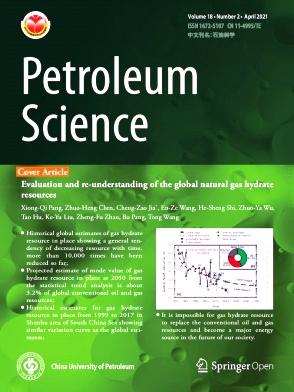Morpho-dynamics in fan deltas: Effect of topography on flow transformation, facies distribution and graded profile evolution, a case study in XLG fan delta
IF 6
1区 工程技术
Q2 ENERGY & FUELS
引用次数: 0
Abstract
Fan deltas are usually constructed through episodic flood event with debris flow transforming to hyper-concentrated flow during sediments proceeding. However, the role of topography in controlling the flow transformation and sediments aggradation has been less studied. This constrain studies of sediment distribution and understanding of graded profile. For lake basin sequences, geomorphological control is much stronger than lake level rise and fall. Under extreme conditions, sediments can still prograde when the lake level rises. Therefore, describing the influence of geomorphology on the flow transformation and stacking pattern of the lobes can provide a deeper understanding of the controlling factors of the lake basin stratigraphy sequence. Xiligou lake (XLG) fan delta from Xisai Basin provides an optimal case for addressing this issue. Three lobes developed on the XLG fan delta with significant differences in their morphologies, architectures, lithofacies, sediment distributions and topographies. Through trenching, drone photography, and satellite data, we analyzed the structure of the sediments and the distribution of sedimentary facies. Based on the analysis of debris flow and hyper-concentrated flow deposits, two transformation models corresponding to different topographies were established. Sediment unloading is caused by a frictional reduction or a sudden momentum loss in the sediments flow's carrying capacity, allowing the debris flow transforms to hyper-concentrated flow and then to stream flow during the movement. The role of topography in controlling sediment flow transformation and sediment distribution is clarified through forces analysis of sediment grain. The topographic gradient of the linear slope is constant, so the direction of fluid movement is consistent with the topographic direction. Therefore, sediment flows move on linear slope without collision with the bed and there is no sudden loss of momentum. The gradual or sudden reduction in topographic gradient of concave slopes forces a constant or sudden change in the direction of fluid movement, which facilitates the unloading of sediments and the transformation of flow. The sudden change of topography forces unloading of viscous component, and the non-viscous component pass over to form hyper-concentrated flow, often accompanied by remobilized large gravels. The graded profile was an equilibrium between the dynamics and resistance of sediment transport. Changes in lake level affect the graded profile by changing the elevation of sediment transport, which is the total gravitational potential energy. The instantaneous graded profile and temporary graded profile are different scales of equilibrium corresponding to hydrodynamic equilibrium and depositional trend respectively. This study reveals the role of geomorphological dynamics in controlling sedimentary body progradation, thus providing a new perspective on the analysis of lake basin stratigraphy sequence.
求助全文
约1分钟内获得全文
求助全文
来源期刊

Petroleum Science
地学-地球化学与地球物理
CiteScore
7.70
自引率
16.10%
发文量
311
审稿时长
63 days
期刊介绍:
Petroleum Science is the only English journal in China on petroleum science and technology that is intended for professionals engaged in petroleum science research and technical applications all over the world, as well as the managerial personnel of oil companies. It covers petroleum geology, petroleum geophysics, petroleum engineering, petrochemistry & chemical engineering, petroleum mechanics, and economic management. It aims to introduce the latest results in oil industry research in China, promote cooperation in petroleum science research between China and the rest of the world, and build a bridge for scientific communication between China and the world.
 求助内容:
求助内容: 应助结果提醒方式:
应助结果提醒方式:


